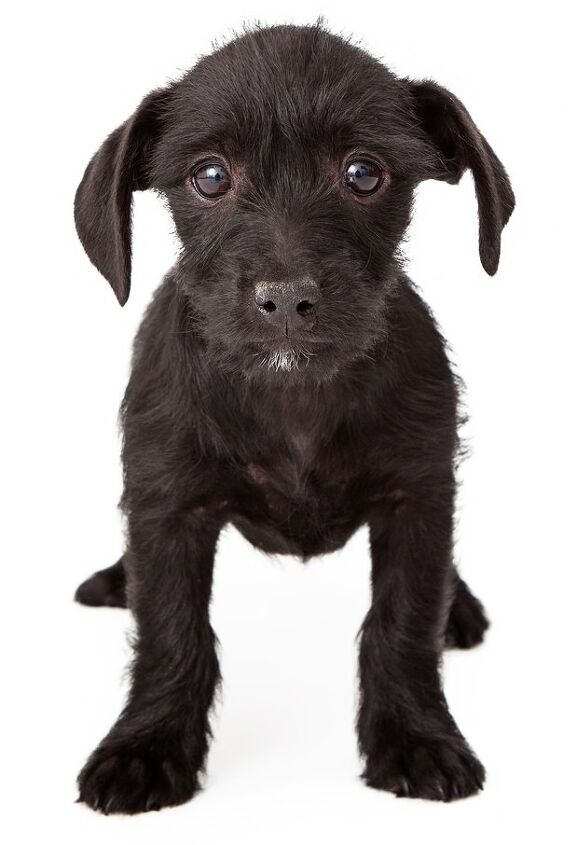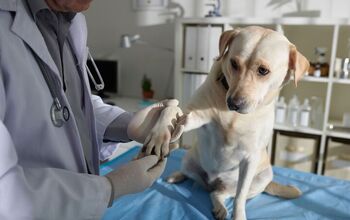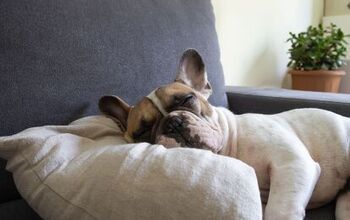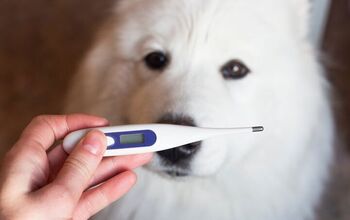Patterpoo


About Patterpoo
The Patterpoo is a lovely little family pooch who brings the feisty, high-energy nature of the Patterdale Terrier together with the loyal, low-shedding characteristics of a Poodle. While not a large dog, the terrier side of the Patterpoo can make him a handful for a novice pet owner and his need to expend energy means he needs an owner with the time to keep him mentally and physically stimulated.
The Patterpoo is a hybrid of a Patterdale Terrier and a Miniature Poodle.
The allure of producing popular breeds with the low-shed characteristics of a Poodle took off in the 1980s and resulted in the Designer Dogs you see today. The Patterpoo is one such dog and brings the feisty little Patterdale Terrier who until the 1950s was a relatively unknown breed out of Northern England, together with the Miniature Poodle that harkens back to Germany in the 1500s.
The Patterpoo’s cross-breed status prevents him from becoming a member of the American Kennel Club (AKC) however one of his parent breeds is a long time member; the Poodle joined the “sporting” group in 1887. While the actual Patterdale Terrier is not a member, he is in fact classed as a “working version” of the Lakeland Terrier who joined AKC’s “terrier” group back in 1934.
The Patterpoo is a small but active dog and requires a high quality kibble that delivers the vitamins and nutrients needed to keep him fit and healthy. Because has the potential to become obese, you should select a dry food without carb fillers and plan to feed him 2 to 3 small meals a day versus free feeding. Due to his Poodle DNA he may also be prone to digestive issues including pancreatitis so avoid anything with a high fat content.
The Patterpoo is a wonderful little companion dog.
While the Patterpoo is the product of two breeds that are intelligent and eager-to-please, the terrier side results in a pooch who can be easily distracted and a challenge to train. Don’t relent! Because he can be territorial around other animals, it’s important he be socialized and trained in obedience at an early age. If you feel out of your depth, bring in an expert but don’t ignore this need. As with any breed, rewards-based training with lots of praise and well-earned treats will help you get the results you’re looking for.
The weight of a Patterpoo can range between 10 and 20 pounds.
The Patterpoo is a wonderful little companion dog who is highly affectionate and loves to snuggle up in the evening with his family. He’s an intelligent pooch who can have a mind of his own but is truly loyal to his human pack and loves to play with kids. He doesn’t do well when left on his own for any length of time so really needs a home where someone is available to keep him company, exercised and supervised during the day.
Health issues that present in purebreds can often bypass a cross of the breed however potential pet parents need to learn what their new pet may inherit. With the Patterpoo, he can inherit a propensity for dental disease and obesity from the terrier side as well as joint and digestive issues from the Poodle side.
The average life span of a Patterpoo is 11 to 13 years.
If you want a calm Patterpoo when he’s indoors you’ll need to devote time to meeting his daily exercise needs. A good long walk is ideal coupled with active playtime in a fully fenced yard to satisfy his need to chase and catch. Because of his terrier DNA, off-leash dog parks are not a good idea as he tends to run after anything that moves and may be tough to corral afterwards.
The Patterpoo is highly affectionate and loves to snuggle up with his family in the evening.
Also known as the Patterdoodle, the Patterpoo is not recognized by the American Kennel Club however he is recognized by the International Designer Canine Registry (IDCR).
The Patterpoo typically has a rough double-coat comprised of thick, waterproof hair that is longer around his face, ears and muzzle. He is relatively low-maintenance, requiring brushing or combing periodically to remove loose hair and stripping in warmer weather when light shedding may occur. Overall, he is a low shedding dog however he does come from a breed that was bred to hunt underground so digging can very well be an issue – which may make bath-time a frequent occurrence!.
Patterpoo puppies are high energy and can be quite confident in their interactions with humans and other animals alike. In fact they develop strong bonds with their owners quite early on. Because the Poodle side of this little guy can be prone to joint issues it’s important to not over-do the walks and active playtime – no matter how much you want to tire him out!
Photo credit: tetxu/Depositphotos; adogslifephoto/Depositphotos

Sharing space with three seriously judgy Schnoodles and a feline who prefers to be left alone. #LivingMyBestLife
More by Mary Simpson
























